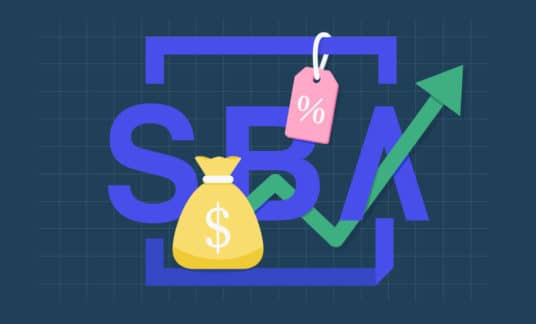The Small Business Administration (SBA) evaluates a business according to the SBA size standards to determine whether it meets the small business definition requirements. Size standards vary by industry and are determined, in part, on the number of employees or the annual amount of receipts.
Let’s look at what is considered a small business, how the SBA applies its small business size standards and why it’s important to know whether your company meets them.
SBA Small Business Definition
The federal definition of a small business, in general, is based on your company’s number of employees or its number of annual receipts.
The SBA size standards aren’t a uniform measurement across various industries. A small business, in some sectors, can have its number of employees top out at 1,500 people. In contrast, a small business in a different industry might not be allowed to have more than 250 employees, or they’ll risk losing their small business classification.
When it comes to receipts, a business in one industry may be able to bring in average annual receipts of $38.5 million, while another can bring in just $750,000 before losing their “small business” title.
The disparity among the small business qualifications might seem perplexing, but they’re necessary to accommodate industry variances. Businesses in different industries face disparate barriers to entry, varied staffing needs and dissimilar profit expectations. Small business criteria adjust to allow for those differences.
The SBA also takes other aspects into account when considering small business classification, including:
- Whether the company is headquartered and/or largely operated in the U.S.
- If it’s a for-profit business
- Whether the company is truly independently owned, or if it’s a branch of a larger business

SBA Size Standards by Industry
Here are some of the most common industries and their small business size guidelines:
Agriculture, Forestry, Fishing and Hunting
Multiple businesses may receive a maximum of $1 million in average annual receipts. Other businesses can receive several million dollars in average annual receipts and still meet the small business requirements. Examples include chicken egg production ($16.5 million), finfish fishing ($22 million) and post-harvest crop activities ($30 million). The only small business with an explicit limit to its number of employees is logging, which can have a maximum of 500 employees.
Manufacturing
SBA size standards in this industry range between 500 and 1,500 employees, depending on the type of manufacturing. About a quarter of all businesses in the manufacturing industry can have a maximum of 500 employees. That includes the following: machine shops; fabricated pipe and pipe fitting manufacturing; retail bakeries and optical instrument and lens manufacturing. Small businesses allowed more employees include the following: oil and gas field machinery and equipment manufacturing (1,250 employees); semiconductor machinery manufacturing (1,500 employees) and major household appliance manufacturing (1,500 employees).
Retail Trade
Small business classification for retail trade businesses ranges from $8 million to $41.5 million in average annual receipts.
Florists, art dealers and window treatment stores are among the retailers that can receive up to $8 million in average annual receipts and still fit the SBA small business definition. According to SBA size standards, men’s clothing stores can receive up to an average of $12 million in average annual receipts. That number rises to $16.5 million for automotive parts and accessories stores and sporting goods stores. Stores that can have a higher amount in average annual receipts include women’s clothing stores ($30 million), home centers ($41.5 million) and warehouse clubs and supercenters ($32 million). Most companies don’t face employee limits, except for new car dealers, which can have up to 200 employees, and fuel dealers, with no more than 100 employees.
Information
Most types of businesses in the information industry can have between 250 and 1,500 employees. For book, newspaper and magazine publishers to be considered a small business, their number of employees can’t exceed 1,000. Wired and wireless telecommunications carriers can have up to 1,500 employees. Record production and distribution’s small business size standard is 250 employees.
The average annual receipt allowance varies from $8 million to $41.5 million. Movie theaters, radio stations and cable and other subscription programming can have up to $41.5 million in average annual receipts to meet the SBA’s small business qualifications. Drive-in movie theaters and sound recording studios can’t have more than $8 million in annual average receipts to fit the SBA’s rules of what is considered a small business.
Real Estate, Leasing and Rentals
Businesses can receive between $8 million and $41.5 million in average annual receipts, depending on their sub-industry. There are no small business requirements regarding the number of employees in this sector. Small businesses for real estate agents and brokers and property managers are limited to $8 million for average annual receipts. Formal wear and costume rental have a maximum limit of $22 million in average annual receipts. Passenger car rental and leasing and truck, utility trailer and RV leasing are allowed a maximum of $41.5 million in average annual receipts to meet small business criteria.
If you’re not sure if your company fits the SBA small business definition, you can use the SBA’s Size Standards Tool.
Why Does the SBA Small Business Definition Matter?
The SBA small business definition helps these companies compete in our economy. A large corporation that brings in millions of dollars in profits and has at least that amount of investments in equipment and property can easily qualify for a loan and nab job contracts. However, a small, local business that’s either just starting or struggling can have difficulty obtaining business financing or winning work contracts. That’s why the government chooses to offer help to businesses under a certain size and profit margin.
If your company meets the small business criteria, you can gain access to several benefits.
Loan Access
SBA loans are financing programs designed to help small businesses get the funding they need. These loans are partly guaranteed by the SBA, which helps decrease a lender’s risk when approving financing for a small business.
Some SBA loan options include the following:
- 7(a) loans: Your business could be approved for up to $5 million in funding with this loan program. Most loans come to maturity in 7 to 25 years, and the interest is the prime rate plus a maximum of 4.75%. The SBA will guarantee up to 75% of loans for more than $150,000 and 85% of loans for less than $150,000.
- CDC/504 loan: This program can provide an unlimited amount of financing. However, the money must fund fixed assets, such as property or equipment, “that promote business growth and job creation,” according to the SBA. With a 504 loan, the lender partners with a certified development company (CDC) to provide the funding majority (usually 50% from the lender and 40% from the CDC). The SBA will guarantee the CDC’s portion of the loan. Maturity terms can range from 10 to 20 years.
- Micro loans: If you need a smaller loan amount (no more than $50,000), you can apply for an SBA-guaranteed micro loan through a non-profit community institution. Interest rates vary between 8% and 13%. A micro loan’s maximum maturity term is 6 years.
Grants
A small business classification can help your business qualify for grant funding, such as:
- SBA State Trade Expansion Program (STEP): Grant money is distributed to U.S. states and territories and then given to qualified businesses to help them enter international markets.
- Rural Business Development Grants: The U.S. Department of Agriculture (USDA) provides training and technical assistance to businesses in rural areas to complete projects that benefit the local community or organization. Qualifying small business requirements include having fewer than 50 new employees and less than $1 million in gross revenue, as well as being headquartered in a rural area.
Contract Opportunities
Some government contracts also give preference to small businesses.
The SBA 8(a) program gives socially or economically disadvantaged business owners the opportunity to bid on set-aside or sole-source government contracts. Set-aside contracts limit bidding competition to small businesses or small businesses in the 8(a) program for contracts worth $150,000 or less. Sole-source contracts can eliminate the bidding process if your small business is the only company that could fulfill the deliverable. These sole-source contracts’ worth can range from a maximum of $4 million to $6.5 million.
Resources
There are other benefits available to small businesses. The SBA provides specific resources, like counseling, local mentoring, business planning, online courses and more, to help small business owners get started or grow their businesses.








